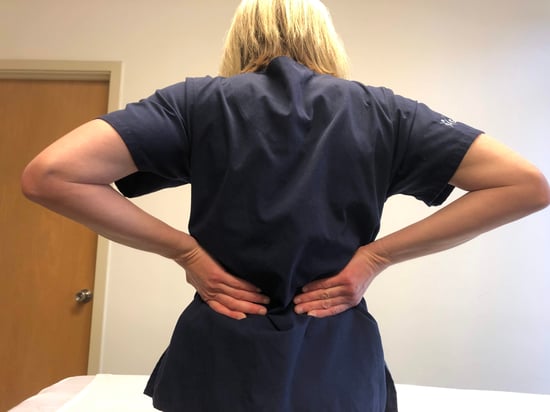Safety in High Reliability Healthcare
by Larissa Biggers, on November 01, 2019
According to the Joint Commission, high reliability healthcare organizations must demonstrate “consistent excellence in quality and safety across all services maintained over long periods of time.” It further notes that currently there is no healthcare facility that meets these standards. Despite the bleak statement, the Commission believes that the goal, while lofty, is achievable.
To that end, it established the Joint Commission Center for Transforming Healthcare, along with a framework that hospitals can use as they begin to do the work required to achieve high reliability status. The framework consists of three pillars:
- Leadership committed to the goal of zero harm
- A culture of safety in which anyone can speak up about potential issues
- A workforce empowered with strong process improvement skills
Leadership and Zero Harm
Hospitals can learn a lot from the airlines, nuclear power plants, and forest firefighting. These are all examples of high reliability organizations; they have the potential for catastrophic failure yet have nearly perfect safety records. In healthcare, safety and quality efforts are often applied on a project-by-project basis; they might have positive results, but these changes are not widely applicable, nor do they lead to zero harm.
Well-intentioned but ultimately ineffective efforts like these exemplify the need for engaged leadership committed to achieving high reliability status. It comes down to this; at a high level, leaders of healthcare organization must willing to allocate time and resources if they expect to see improvement. They must do what it takes do to find and fix systemic problems that make it difficult for staff to care for patients safely and effectively.
An example of a leadership practice that works is the safety huddle. This brief daily stand-up meeting is a venue for department directors and managers to share issues that occurred in the last 24 hours. Attendance is mandatory. Why do safety huddles work? Here’s an example.

In a recent huddle at a large hospital system, leadership learned that 130 patients with the same or similar names were receiving care simultaneously. The facility initiated a name alert process to head off mistaken identity and potential adverse events. In addition to this positive outcome, since instituting its safety huddles, the system has reduced its C. difficile infection rate by 44%, and they have systems in place for effectively managing high patient volumes and flu outbreaks.
Culture of Safety
When asked to identify the top patient safety issue in healthcare today, Anne Marie Benedicto, vice president of the Joint Commission Center for Transforming Healthcare responded, “Intimidating behaviors.” She knows that intimidation can lead to errors because people are too frightened to speak up, ask questions, or share ideas. She explains, “This creates an unsafe environment because people who are not going to speak up will also hold their tongues when patients are involved. The healthcare organization misses out on identifying the unsafe conditions to prevent harm and also on the good ideas employees have to improve their organizations."
This statement indicates why the second tenant of building a high reliability organization is creating a culture of safety where all employees (including leadership) can report unsafe conditions and opportunities for improvement without fear of repercussions. By encouraging this behavior, organizations can circumvent serious safety events in the future. For instance, if a technician witnesses a nurse manually lifting a large patient to “save time” when lifting equipment is available, he should report the event. Being proactive (e.g., holding a training day on SPHM equipment) is much safer and more cost effective than reacting (finding a replacement for an injured nurse).

As with the safety huddles, a culture of safety means that problems and errors should not be swept under the rug. The goal is to learn from mistakes so they are not repeated.
Performance improvement
Performance improvement closely aligns with a robust safety culture, as affecting change starts with identifying safety problems and their root causes. In addition, employees should be well-versed in quality improvement. In fact, it should be a common skill set in healthcare so staff apply it their daily work.
When well-executed, process improvement can result in real and lasting changes. Take Northwell Health. It knew it had a safety problem among staff; its workers’ compensation budget was projected to reach nearly $100 million in 2019. Compounding the problem was an atmosphere of mistrust among employees and leadership. Rather than hide or ignore the issues, the organization established a workforce safety team. Among other accomplishments, the group designed and implemented a dynamic safe patient handling program that cut lost time and indemnity claims by a third. Not content to rest on its laurels, the organization continues on its path to improvement. For instance, to help employees recognize and avoid hazards, it holds an annual SPHM Olympics among its 12 facilities. Since the SPHM program’s inception in 2016, claims related to patient handling claims have fallen by 30.7%, and lost days have decreased by 35.3%.

While the road to becoming a high reliability healthcare organization is not easy, every step toward that goal can reap its own rewards. Cleveland Clinic is a shining example. Its high reliability initiative, focused on team building, policy standardization, real-time operational management, and creating a culture of safety has paid off. For instance, its 30-day readmission rate has fallen significantly, due largely to high-reliability initiatives.
To learn more, explore the Joint Commission's metrics and tools for assessing your organization's leadership, safety culture, and process improvement as preconditions to high reliability.



